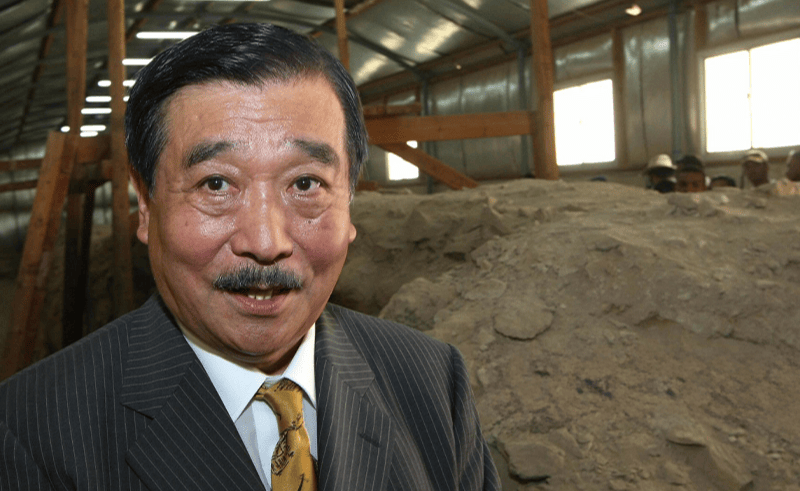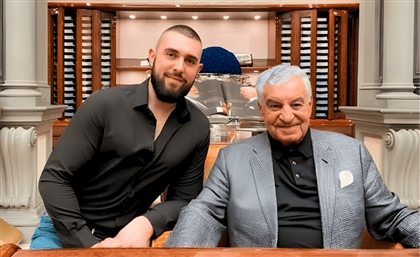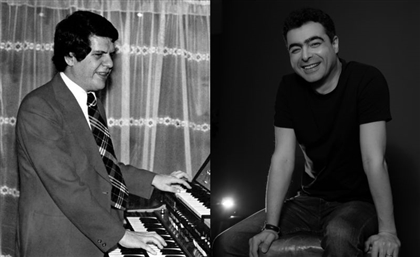Egyptologist Sakuji Yoshimura on Unearthing Khufu’s Second Solar Boat
In an exclusive conversation at the Grand Egyptian Museum, Professor Sakuji Yoshimura, the Japanese Egyptologist behind the restoration of Khufu’s Second Solar Boat, reflects on decades of discovery.

In 1954, archaeologists uncovered a wooden ship buried beside the Great Pyramid of Giza—Khufu’s Solar Boat, built to carry the pharaoh into eternity. Thousands of miles away in Japan, a young Sakuji Yoshimura was captivated by the news. At ten years old, he decided he would one day devote his life to ancient Egypt.
Twelve years later, at just twenty-two, Yoshimura arrived in Egypt to begin his research, determined to see the Great Pyramid and the legendary boat that had inspired him. Standing before the pit where the first Solar Boat was found, he began to wonder whether the ancient Egyptians, known for their devotion to balance, had buried a second vessel on the opposite side.
Behind him today, the skeletal scaffolding visible inside the Grand Egyptian Museum marks the next chapter of that story: the painstaking restoration of the Second Solar Boat, unearthed under Yoshimura’s direction and now being prepared for live reconstruction over the next three years.
For the Japanese Egyptologist, who has devoted decades to uncovering and preserving Khufu’s second vessel, the two boats stand as twin testaments—one to the grandeur of the ancient world, and the other to the endurance of modern collaboration, patience, and faith in discovery.
CairoScene sat down with Professor Yoshimura exclusively at the Grand Egyptian Museum, where he reflected on the journey that began with a childhood fascination in Tokyo and culminated in one of Egypt’s most remarkable archaeological restorations.
*Our interview has been edited for length and clarity. The conversation took place in Japanese with the aid of a translator.
You first came to Egypt in 1966. What drew you here in the first place?
I first became fascinated with Egyptology when I was just ten years old. From then, I tried hard to understand everything I could about ancient Egypt. At twenty-two, I finally came here on a merchant ship, my first time leaving Japan.
And that beginning eventually led you to one of Egypt’s most extraordinary archaeological finds, the discovery of Khufu’s Second Solar Boat. How did it all unfold?
When I first came to the Giza Plateau in 1966, I visited the museum that displayed Khufu’s First Solar Boat, on the southern side of the Great Pyramid. I noticed something: the ancient Egyptians were very fond of balance and symmetry. So I thought, if there is one boat in the south, maybe there is another in the west.
For years I tried to get permission from the Ministry of Antiquities to explore that western area. It took a long time, many requests, and a lot of patience. Eventually, I used radar that could detect what lay underground and found it. But still, I had to wait years more.
Finally, in 2011, I received official permission. We lifted the limestone blocks that had sealed the chamber for thousands of years, and there it was, Khufu’s Second Solar Boat.
What did you feel at that moment, seeing it for the first time?
After so many years, seeing the boat was a very emotional experience. I felt extremely proud.
For those who may not know, what was the purpose of the solar boats?
Most people think the Solar Boat carried the king with the sun god Ra, journeying through day and night in eternal cycles. But I believe it was also used practically, for the king’s pilgrimage to Abydos, one of ancient Egypt’s most sacred sites.
The restoration process has been described as one of the most complex in history. What made it so difficult?
The timbers were extremely fragile, they had been buried for more than four thousand years. We couldn’t simply lift them, they would break apart.
So we used Japanese paper to wrap and stabilise each piece before removing it. That idea came from Japanese conservation techniques for delicate materials. It was slow, careful work, we could only handle a few timbers each day.
The process took nearly ten years. Only in 2022 were we able to lift the final piece. During that time, we also scanned every timber in 3D and reconstructed the entire boat digitally on computers. That allowed us to understand how it originally looked and how to reassemble it without causing damage.
But the wood is still too weak to stand by itself. So now we have built a supporting skeleton, an invisible structure, on which the timbers will rest. That way, the boat will appear whole again, but its ancient material will remain protected.-c69dbcb4-3deb-4f3d-9f2b-a9304348b6c8.png)
Egyptologist Sakuji Yoshimura inspects a part of the second Khufu boat that will undergo a restoration process at a temporary restoration laboratory, in Cairo's northern Giza province, on March 29, 2017.
You’ve said that the next phase of restoration will be visible to the public. Why is that important to you?
Because archaeology should be seen. Visitors, tourists, students, they will all be able to see how we consolidate the wood, bend it, and place it on the skeleton.
If we succeed, this project could change how the world understands the history of boats, not only in Egypt but in all human civilisation.
- Previous Article Abyusif Searches for Solace in Seclusion in New Track 'B2ZY NFSI'



























